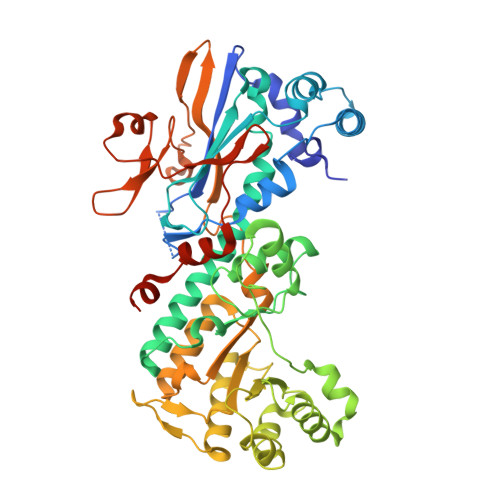Structural and biochemical analyses of the catalysis and potency impact of inhibitor phosphoribosylation by human nicotinamide phosphoribosyltransferase.
Oh, A., Ho, Y.C., Zak, M., Liu, Y., Chen, X., Yuen, P.W., Zheng, X., Liu, Y., Dragovich, P.S., Wang, W.(2014) Chembiochem 15: 1121-1130
- PubMed: 24797455
- DOI: https://doi.org/10.1002/cbic.201402023
- Primary Citation of Related Structures:
4L4L, 4L4M, 4O0Z, 4O10, 4O12 - PubMed Abstract:
Prolonged inhibition of nicotinamide phosphoribosyltransferase (NAMPT) is a strategy for targeting cancer metabolism. Many NAMPT inhibitors undergo NAMPT-catalyzed phosphoribosylation (pRib), a property often correlated with their cellular potency. To understand this phenomenon and facilitate drug design, we analyzed a potent cellularly active NAMPT inhibitor (GNE-617). A crystal structure of pRib-GNE-617 in complex with NAMPT protein revealed a relaxed binding mode. Consistently, the adduct formation resulted in tight binding and strong product inhibition. In contrast, a biochemically equipotent isomer of GNE-617 (GNE-643) also formed pRib adducts but displayed significantly weaker cytotoxicity. Structural analysis revealed an altered ligand conformation of GNE-643, thus suggesting weak association of the adducts with NAMPT. Our data support a model for cellularly active NAMPT inhibitors that undergo NAMPT-catalyzed phosphoribosylation to produce pRib adducts that retain efficient binding to the enzyme.
Organizational Affiliation:
Genentech, Inc., Department of Structural Biology, 1 DNA Way, South San Francisco, California 94080 (USA).

















